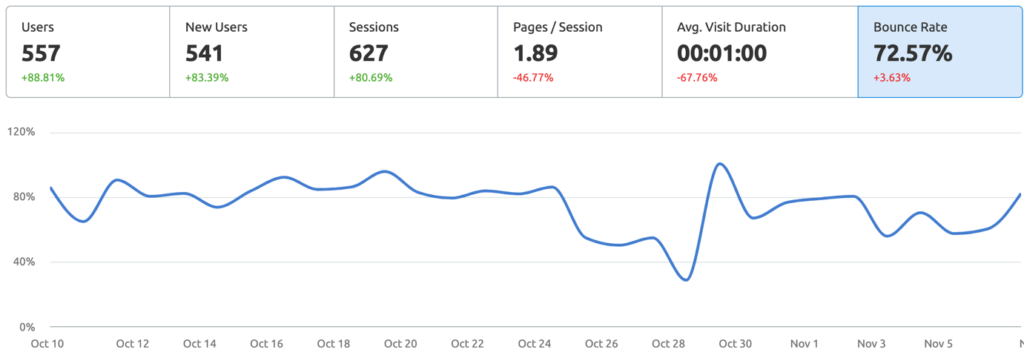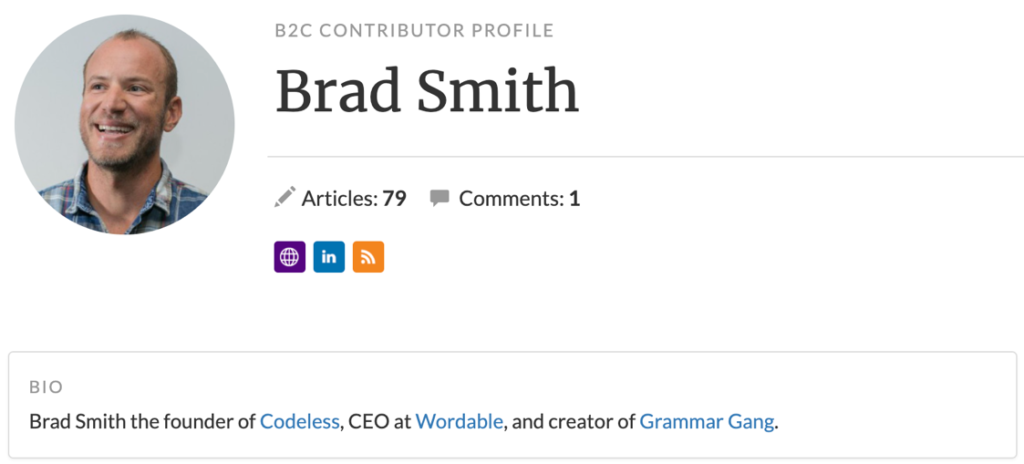Reaching atop the seemingly insurmountable mountain of search engine rankings is no small feat. If you’ve accomplished this, then pat yourself on the back because the effort you’ve put into your SEO strategies has finally paid off. However, most businesses make the fatal mistake of resting on their laurels once they’ve attained the prime spot.
Shooting to the top of search engine rankings is just half the battle won. You now have to ensure your site doesn’t slip from the position you’ve worked so hard to achieve. Being consistent with your site optimization is necessary as being even a little complacent can considerably decimate your site’s ranking. That said, retaining SEO rankings doesn’t have to be tough. You can resort to a plethora of extremely effective measures to defend your site’s top position.
So without much further ado, let’s look at the ten tips you can try to maintain your site’s top ranking on search engines like Google and Bing.
9 Simple Ways to Retain Your SERP
1. Make Smart Use of Keywords
Inserting keywords into your site’s content is a surefire way of getting noticed online. However, you need to be smart with their placement within a blog, article, or any other type of written content.
People are often tempted to stuff their articles with multiple high-ranking keywords, paying very little attention to its effect on the overall quality of that content. Keywords must be integrated organically within your article.
Avoid polluting your articles or blogs with irrational sounding keywords that ultimately harm their clarity and readability. Instead, we suggest using long-tail keywords. You can also employ tools like Google’s Keyword Planner to find high-performance keywords appropriate to your article.
2. Populate Your Site with Unique and Varied Content
Search engines favor websites that offer fresh, top-quality articles to their visitors. So it is highly recommended to frequently update your site with relevant, unique, and engaging content.
Consistently updating the content of your pages will help maintain and even improve your search engine rankings.
Blogs are the most common form of content found on websites today. If you want to stand out among your competitors, we suggest offering something distinguishable to your readers.
Try experimenting with different types of content that can be delivered in videos, infographic-heavy blogs, long-form articles, and podcasts.
Also, make sure you avoid redundancy at all costs as you do not want to bore your audience.
3. Building a Strong Social Media Base
Whether or not social media channels qualify as a legitimate ranking factor is still up for debate. However, one cannot deny the indirect influence they have on a site’s performance. Engagement on platforms like Facebook or Twitter can result in your site experiencing high traffic.
The higher the traffic, the better your chances of retaining the top SERP position. A decent social media presence also means that all of your social accounts will now present themselves on SERPs.
For E.g, Take a look at this social profile from Snickers.

Furthermore, higher engagement from social media platforms could also indicate that your site harbors quality content.
You can start building your social media presence by allying with influencers, integrating social media share buttons on your site, frequently posting on social media, and implementing a CTA line within your content.
4. Creating Outbound and Internal Links
Outbound links have often been associated with sites losing traffic. This cannot be any further from the truth. On the contrary, it is much easier for search engines to determine your site’s relevancy by referring to outbound links that redirect to authority sites.
On the other hand, you can also use internal linking to reduce bounce rates and increase crawlability. Both Inbound and Outbound links can work as successful strategies in a bid to retain your SEO rankings.
You can use tools like SEMRush to track the bounce rate of a website.

That said, we suggest using such links within limits. Only add links if you believe they bring value to your content. Overuse of outbound and internal links will only end up causing you more problems.
5. Title Tag and Meta-Description Optimization
The title tag and meta-description exist to serve as short summaries of your page’s content. These are the first thing a potential visitor will see, and they will play a major role in determining whether someone clicks on your page link or not. Therefore, it is important to have a title tag and meta-description that is clear and relevant to the page content.
It should be persuasive enough to entice visitors into clicking on a link. So use meta-tags with keywords that are relevant to your site.
The 60 characters or so you use to compose such tags should comprise words that are descriptive while also engaging. You can learn whether your meta-tags are working by monitoring your webpage’s CTR (Click Through Rate).
A website’s CTR can be monitored using tools like Google Search Console. The tool will help you learn about the keywords triggering impressions on your page and how many clicks were generated because of those impressions.
6. Pay Attention to Your Competitor’s Activities.
Once you’ve reached the top SERP position, you can bet your competitors are going to pull out all the stops to knock you down. Hence, one must remain vigilant at all times and keep an unwavering eye on all of your competitor’s activities.
Fortunately, we have a wide range of tools at our disposal today to track them.
Tools like SEMRush can help you learn almost every little intricate detail about your competitor’s website.

You can acquire information such as what SERP position your competitor’s website holds and what keywords they are ranking for.
You can also try tools like OpenSiteExplorer to find out about any website’s Page Authority, Domain Authority, and Backlinks, among many other things.
7. Guest Blogging
Guest Posting can be an effective way of increasing your site’s traffic and attracting a new crop of users to your site.
Websites that allow Guest Posting allows you to mention your social accounts in the Author’s Bio section.
For E.g., Have a look at this profile of an expert author in Business2community.

You can leverage this to build your social media presence and get much-needed exposure for your brand.
Some websites also allow you to insert links to your site in the posted guest blog, which can ultimately help maintain or improve your search engine ranking.
We suggest being more frequent with your guest posts instead of posting one-off blogs to acquire backlinks. Make sure you only use reputable websites to guest post.
8. Optimize Your Site’s Loading Speed
This goes without saying; people online jump from one site to another, searching for whatever they are looking for. They don’t have the patience to spend on a slow-loading website that takes a painfully long time to fully render. This will affect the ranking of your webpage.
As such, we suggest making sure your site doesn’t have any pages that load at a snail’s speed. Utilize tools like Google PageSpeed Insights to verify your site’s speed on both mobile and desktop devices. If your site is loading slowly, you can try compressing images, reducing JavaScript, using browser cache, or switching the hosting provider.
9. Have a Mobile-Friendly Site
With smartphones amounting to over 54.8% of global website traffic, it is imperative to have a suitably optimized website for mobile. You can use many free tools or turn to Google’s Mobile-Friendly Test to run an analysis that determines whether or not your website is mobile-friendly.
You should know that Google is planning to use a website’s mobile version as a prominent ranking factor in the future. So make sure you have a site that is optimized for all types of smartphone devices. If not, then seek help from your developer today.
The Bottom Line
Heavy lies the head that wears the crown. These Shakespearean words can be used to describe any website that ranks high on Google.
Retaining the top SERP position is one thing; maintaining that position is another hurdle in and of itself. You must learn that there is absolutely no room for laziness or complacency when it comes to SEO.
You must optimize your website consistently to ensure it reaches the desired top ranking and retains it for a long time to come. Initially, this may seem like an arduous challenge to overcome.
However, with the suggestions mentioned above, you’ll be able to stay ahead of your competition or quickly recover from being knocked out of your SERP position without a hassle.
Frequently Asked Questions
1. Can I Pay Google to Rank Higher?
You can run a Google Ad or launch a PPC campaign to widen your website’s exposure to a larger audience. However, these alone will not help you attain a top SERP position. Ranking higher includes several well-devised SEO strategies that must be executed with utmost efficiency.
2. Do I Need SEO if My Page is Already Ranking Higher?
Just because you’ve accomplished the top SERP position, one shouldn’t excuse themselves from performing any more SEO. SEO is an ongoing process; pressing brakes on it abruptly can harm your ranking.
Several internal and external factors can result in your site slipping down the ranks in a short period. For instance, your competitors could implement a strategy that knocks you off your spot, or your site’s content might become outdated after a while.
3. Can Bad SEO Strategy Result in My Website’s ranking being penalized?
If good SEO can boost your site’s ranking, a bad SEO strategy will have the opposite effect. Google can penalize your site for using too many low-quality backlinks, failing to optimize meta-tags, or posting duplicate content on web pages.
4. What is Better SEO or PPC
PPC isn’t an effective strategy to improve your site’s ranking when compared with SEO. SEO is simply far more consistent in improving the value and authority of your website. While PPC will produce immediate results for a targeted audience base, SEO ultimately proves to be more effective and efficient in the long run.
